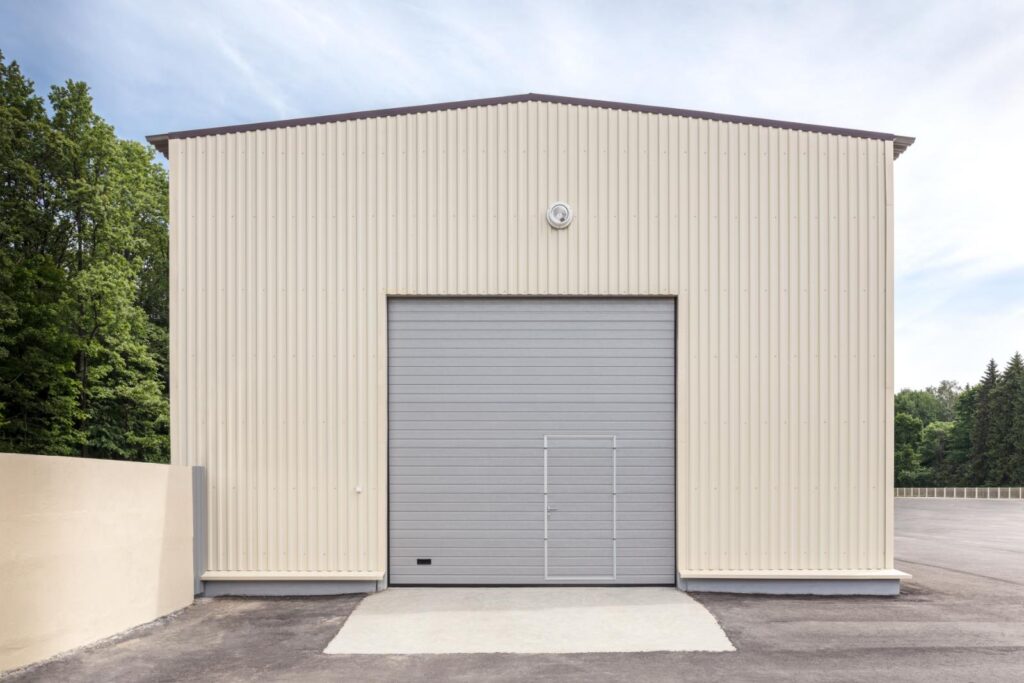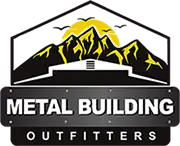
Contents
Isn’t it fascinating how a simple material can transform the landscape of construction? When you consider metal, you’re looking at a solution that offers incredible durability and long-term cost savings. While the upfront investment might raise eyebrows, the benefits you’ll reap—like minimal maintenance and eco-friendliness—can be significant. Plus, its versatility opens doors to innovative designs that push creative boundaries. So, what if you could streamline your project timelines while enhancing safety? It’s worth exploring the myriad advantages that metal can bring to your next construction endeavor.
Key Takeaways
- Metal offers exceptional durability and longevity, with a lifespan exceeding 50 years and minimal maintenance requirements.
- Cost-effectiveness arises from lower maintenance and repair costs, leading to significant long-term savings on total ownership.
- Versatile design options allow for innovative architectural styles, supporting expansive spaces and compatibility with other materials.
- Eco-friendly properties, including high recyclability and low energy consumption, promote sustainable construction practices.
- Construction efficiency is enhanced through prefabricated components, reducing timelines and improving safety on-site.
Long-lasting Durability
When it comes to construction materials, metal stands out for its long-lasting durability, offering resilience against various environmental factors. When you choose metal, you’re opting for a material that excels in both corrosion resistance and structural integrity.
These characteristics are vital, especially in environments prone to moisture, chemicals, or extreme temperatures. Metal’s corrosion resistance means it can withstand rust and degradation over time, ensuring that your structures retain their strength and appearance.
This resistance appreciably extends the lifespan of metal components, reducing the frequency of repairs or replacements. You’ll find that metals like stainless steel and aluminum are particularly effective, as they form protective layers that inhibit corrosion, allowing you to maintain your investment.
Moreover, metal’s structural integrity is paramount in construction. It provides exceptional strength-to-weight ratios, enabling the design of lighter, yet robust structures.
This feature not only enhances the design flexibility but also contributes to safer buildings that can endure heavy loads and adverse weather conditions.
Cost-effectiveness Over Time
Investing in metal for construction can lead to significant cost-effectiveness over time. While the initial investment in metal materials might be higher compared to traditional building materials, an extensive lifecycle analysis reveals that the long-term savings can far outweigh those upfront costs.
Metal’s durability and resistance to environmental factors mean lower maintenance and repair expenses throughout the structure’s lifespan.
When you assess the total cost of ownership, it’s crucial to evaluate factors like lifespan, maintenance requirements, and energy efficiency. Metal structures often require less frequent repairs and have an extended lifespan, reducing the need for replacements. This longevity contributes to a lower total cost per year, making your investment more economical.
Additionally, metal is energy-efficient. It can contribute to lower energy bills due to its reflective properties, helping regulate indoor temperatures. This can lead to significant savings in heating and cooling costs over time, further enhancing its cost-effectiveness.
Moreover, many metal suppliers offer recycling programs, which can mitigate disposal costs at the end of a building’s life. This not only supports sustainability but also adds financial value to your project.
Versatile Design Options
Metal construction offers a wide range of versatile design options that cater to various architectural styles and functional requirements. When you choose metal, you’re embracing modern aesthetics that enhance both form and function. Its inherent strength allows for expansive open spaces, which encourages creative layouts and innovative designs that traditional materials often can’t support.
With architectural flexibility, you can manipulate metal into a variety of shapes and sizes, enabling unique structures that meet specific project demands. Whether you’re aiming for sleek, contemporary designs or more intricate, traditional styles, metal can adapt to your vision. You can explore different finishes, colors, and textures, ensuring that your project stands out while seamlessly integrating with its surroundings.
Additionally, metal’s lightweight nature reduces structural loads, facilitating faster construction timelines without compromising stability. This efficiency not only accelerates project completion but also creates opportunities for more complex designs that might be unfeasible with heavier materials.
Moreover, metal’s compatibility with other building materials allows you to mix and match elements, further enhancing your design possibilities. You can combine metal with wood, glass, or concrete, resulting in a visually appealing and cohesive structure that resonates with your target audience.
Eco-friendly Construction Material
When considering eco-friendly construction materials, metal stands out due to its recyclability, considerably reducing waste.
Its low carbon footprint during production and transportation contributes to more sustainable building practices.
Additionally, the energy efficiency benefits of metal structures can lead to lower operational costs over time.
Recyclability of Metal
Recyclability stands out as one of the most compelling advantages of using metal in construction. When you choose metal, you’re not just opting for durability; you’re also embracing sustainable practices that contribute positively to the environment.
Metal recycling is a highly efficient process, allowing materials to be repurposed without losing their structural integrity. This characteristic makes metal a prime candidate for eco-friendly construction initiatives.
Consider the following benefits of metal recyclability:
Reduced Waste: By recycling metal, you divert waste from landfills, promoting cleaner environments.
Energy Efficiency: Recycling metals often requires less energy than producing new materials, lowering overall energy consumption.
Conservation of Resources: Using recycled metal decreases the need for virgin materials, preserving natural resources.
Economic Benefits: Engaging in metal recycling can reduce costs associated with material procurement and disposal.
Low Carbon Footprint
Choosing metal not only enhances sustainability through recyclability but also greatly contributes to reducing the carbon footprint in construction. When you opt for metal, you engage in sustainable practices that prioritize the environment. Unlike traditional materials such as concrete or wood, metal can be sourced with a lower impact, leading to considerably reduced emissions during both production and transportation phases.
The manufacturing process for metals, especially when using recycled materials, requires less energy compared to primary production. This energy efficiency translates into fewer greenhouse gases released into the atmosphere. By selecting metal, you’re actively participating in a movement towards greener building practices, aligning your projects with global efforts to combat climate change.
Moreover, metal’s longevity means fewer resources are needed for repairs or replacements, further minimizing environmental impact over time. Each decision you make in favor of metal construction supports a cycle of sustainability, reinforcing your commitment to eco-friendly solutions within the industry.
Embracing metal not only serves your project’s structural integrity but also fosters a sense of belonging among like-minded professionals dedicated to creating a more sustainable future.
Energy Efficiency Benefits
Metal stands out as an eco-friendly construction material due to its exceptional energy efficiency throughout its lifecycle.
When you choose metal, you’re not just opting for durability; you’re also investing in significant energy savings. This results from metal’s superior thermal insulation properties, which help maintain ideal indoor temperatures, reducing the need for excessive heating or cooling.
Consider these energy efficiency benefits:
High Thermal Conductivity: Metals facilitate quick heat transfer, allowing for more precise temperature control.
Recyclability: Metal can be recycled without losing its properties, promoting a circular economy.
Longevity: The durability of metal structures reduces the frequency of replacements, leading to lower overall energy consumption.
Reduced Waste: Metal framing and components generate less waste compared to traditional materials, ensuring a more sustainable building process.
Minimal Maintenance Requirements
Longevity is a key advantage when it comes to the minimal maintenance requirements of metal in construction. When you choose metal, you’re investing in materials that resist rust and deterioration, extending the life of your structures. This durability translates to lower upkeep costs, allowing you to allocate resources elsewhere in your project. Additionally, the aesthetic appeal of metal can enhance your building’s design while requiring little effort to maintain its appearance.
To illustrate the minimal maintenance benefits of metal, consider the following comparison:
| Feature | Metal Construction |
|---|---|
| Rust Resistance | High |
| Frequency of Maintenance | Low |
| Lifespan | 50+ years |
| Aesthetic Longevity | Maintained easily |
With metal’s high rust resistance, you don’t need to worry about frequent treatments or protective coatings, a common requirement for other materials. This considerably reduces the time and labor involved in maintenance routines. Furthermore, metal’s inherent strength means it withstands harsh weather conditions, further decreasing the likelihood of damage.
Faster Construction Process
When considering the overall efficiency of a construction project, the faster construction process that metal facilitates stands out as a notable advantage.
Metal construction often employs prefabricated components, which streamline the building process. These components are manufactured off-site and can be quickly assembled on-site, markedly shortening project timelines.
Here’s how using metal can enhance your construction efficiency:
Reduced On-Site Labor: Prefabricated components minimize the amount of labor needed on-site, allowing your team to focus on critical tasks.
Fewer Weather Delays: Metal structures can be erected quickly, reducing the risk of weather interruptions that often hinder traditional building methods.
Optimized Project Planning: With a faster assembly process, you can adhere to tight construction timelines, keeping your project on track and within budget.
Improved Safety: Metal construction reduces the need for intricate scaffolding and prolonged exposure to hazardous conditions, leading to a safer work environment.
Review
To sum up, opting for metal in your construction projects isn’t just a practical choice; it’s a strategic investment echoing the wisdom of ancient architects who prioritized durability and efficiency. As you embrace metal’s long-lasting durability, cost-effectiveness, and design versatility, you’re not only building structures but also contributing to a sustainable future. Just like the timeless structures of the past, your metal constructions will stand the test of time, requiring minimal maintenance and ensuring project success for years to come.
Recent Posts
What Are the Benefits of Durable Metal Construction?
While traditional building materials may offer charm, they often fall short in durability compared to
Benefits of Choosing Strong Metal for Construction
When it comes to bolstering your construction projects, opting for strong metal for construction can
Maximize Longevity With Metal Garage Solutions
When you consider investing in a metal garage, metal solutions offer a remarkable blend of




